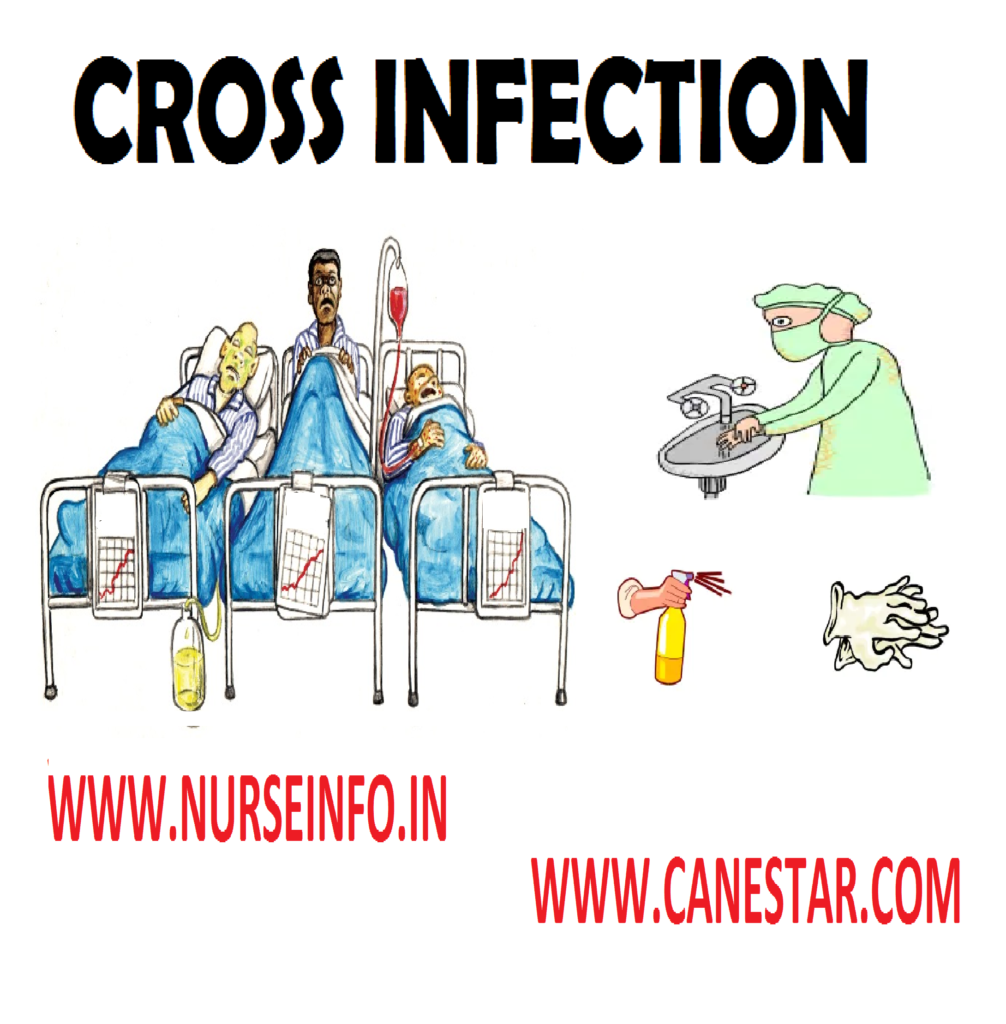CROSS INFECTION
Cross infection in hospitals, also known as nosocomial or healthcare-associated infection (HAI), refers to infections that are acquired by patients during their stay in a healthcare facility. These infections can be caused by a variety of pathogens, including bacteria, viruses, fungi, and other microorganisms. Cross infection can occur through direct or indirect contact with contaminated surfaces, healthcare workers, or other patients. Several factors contribute to the risk of cross infection in hospitals:
1. Compromised Immune Systems:
- Patients in hospitals often have weakened immune systems due to underlying medical conditions, surgeries, or treatments. This makes them more susceptible to infections.
2. Invasive Procedures:
- Procedures such as surgeries, catheterizations, and intubations create opportunities for microorganisms to enter the body, increasing the risk of infections.
3. Use of Medical Devices:
- The use of medical devices like catheters, ventilators, and intravenous lines can introduce pathogens into the body, leading to infections.
4. Proximity of Patients:
- Patients in close proximity to each other may share common areas, increasing the risk of transmission of infections.
5. Contaminated Hands and Surfaces:
- Healthcare workers and visitors may inadvertently transfer microorganisms from one patient to another through contaminated hands, clothing, or surfaces.
6. Overcrowding:
- Overcrowded conditions in hospitals can contribute to the spread of infections due to limited space and increased contact between patients and healthcare workers.
7. Antibiotic Resistance:
- The overuse or misuse of antibiotics in hospitals can lead to the development of antibiotic-resistant strains of bacteria, making infections more challenging to treat.
8. Inadequate Hand Hygiene:
- Poor hand hygiene practices among healthcare workers, patients, and visitors can contribute significantly to the transmission of infections.
9. Environmental Contamination:
- Contamination of hospital surfaces, equipment, and air can contribute to the persistence and spread of pathogens.
Methods of Transmission of Cross Infection
Direct Contact: the organisms can be transmitted directly from person to person through droplet infection, infected hands, sexual contact, etc.,
Indirect Contact: contact with the secretions and excretions of the infected person through fomites (instruments and utensils), through contaminated food and water, through insects, through dust and through carriers
Prevention of Cross Infection
- The hospital should be well ventilated
- Maintenance of general cleanliness of the hospital
- Safe food and water supply
- Safe disposal of excreta, urine, stool and sputum
- The bed pans, urinals, sputum cups are cleaned and disinfected before it is used for another patient
- Discarded dressing and garbage should be collected daily and burnt to prevent the spread of infection
The Chain of Infection
- Infectious agent
- Source or reservoir of infectious agent
- Portal of exit from the source
- Mode of transmission for the infectious agent
- Portal of entrance in to a susceptible host
- Susceptible host
Prevention Strategies:
- Hand Hygiene:
- Promote and enforce proper hand hygiene practices among healthcare workers, patients, and visitors.
- Infection Control Protocols:
- Ensure strict adherence to infection control protocols, including the use of PPE, isolation precautions, and environmental cleaning.
- Antibiotic Stewardship:
- Implement antibiotic stewardship programs to promote judicious use of antibiotics and prevent the development of antibiotic resistance.
- Education and Training:
- Provide education and training to healthcare workers, patients, and visitors on infection prevention practices.
- Surveillance and Monitoring:
- Implement surveillance systems to monitor and track HAIs, enabling early detection and intervention.
- Environmental Hygiene:
- Maintain a clean and hygienic environment through regular cleaning and disinfection of surfaces and equipment.
- Patient Placement:
- Properly segregate patients based on their infectious status to prevent the spread of infections.
- Respiratory Hygiene/Cough Etiquette:
- Encourage patients and healthcare workers to practice proper respiratory hygiene to prevent the spread of respiratory infections.


